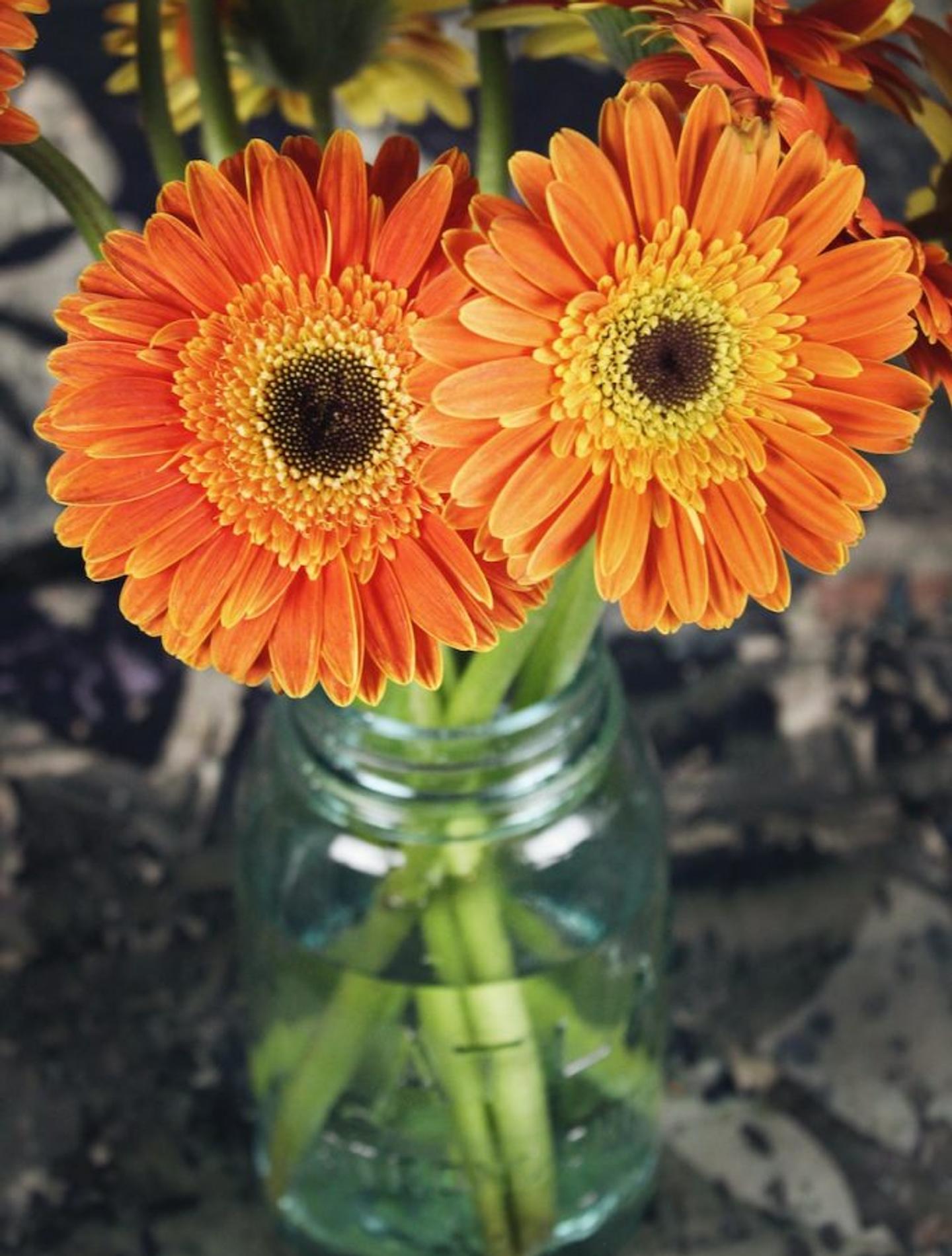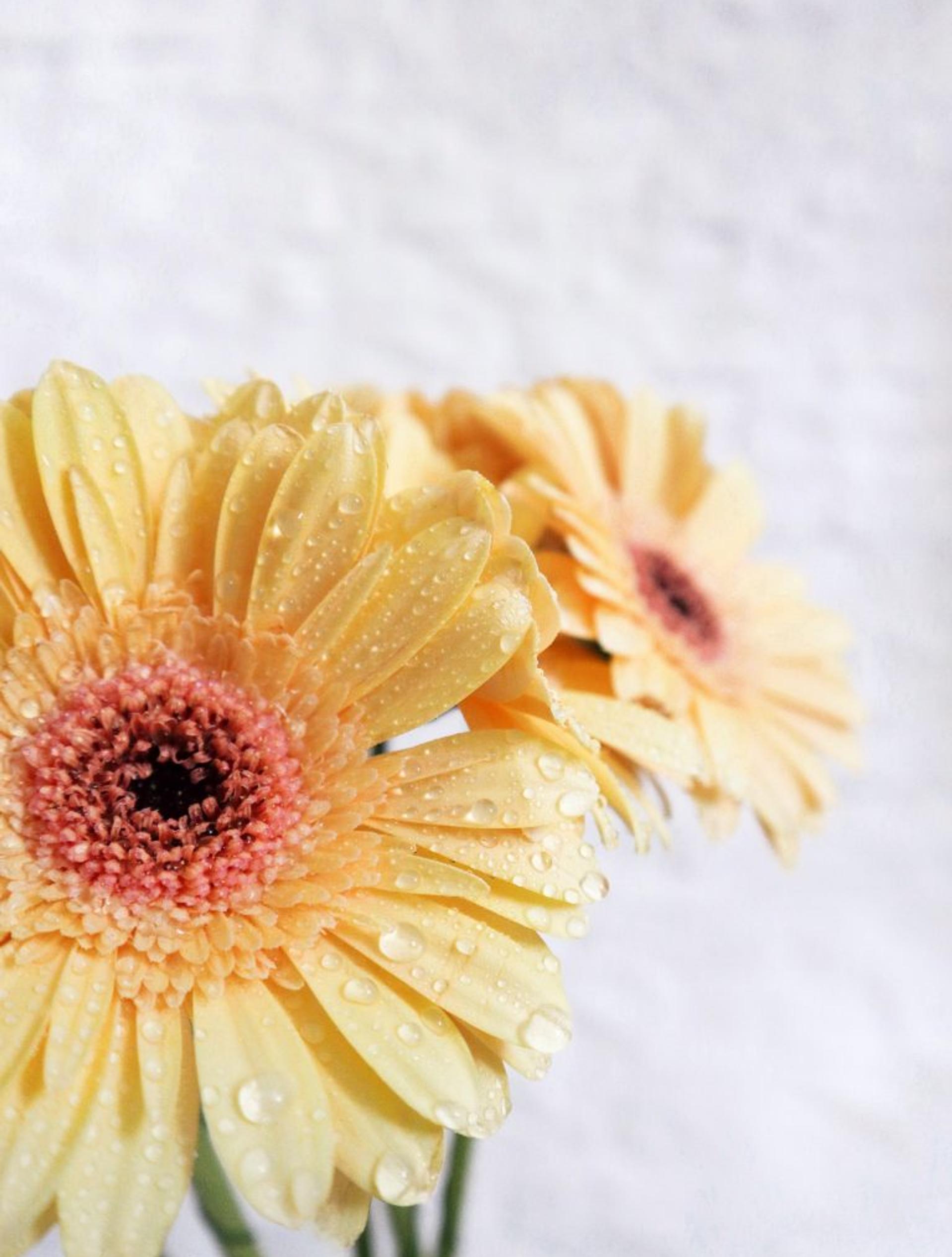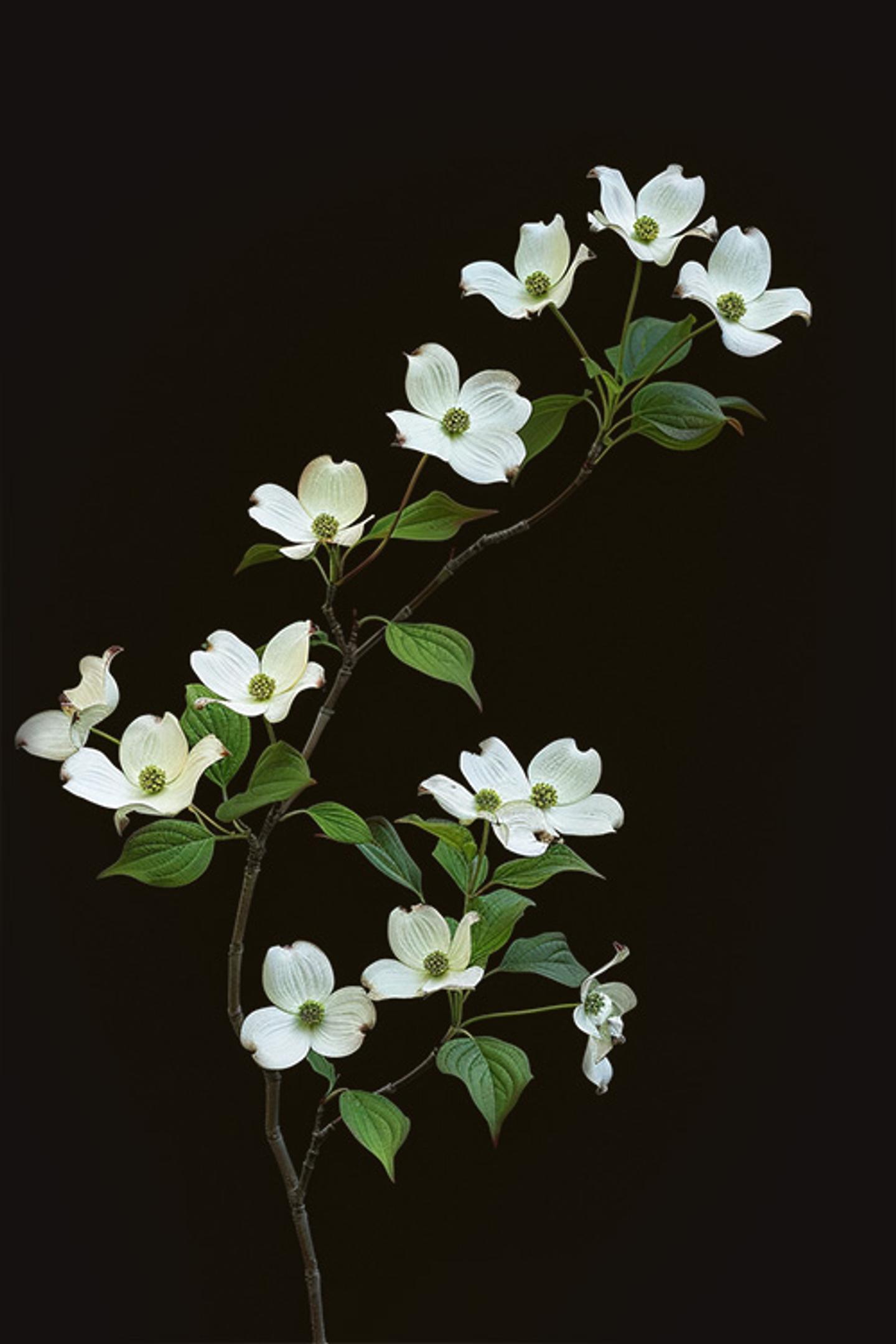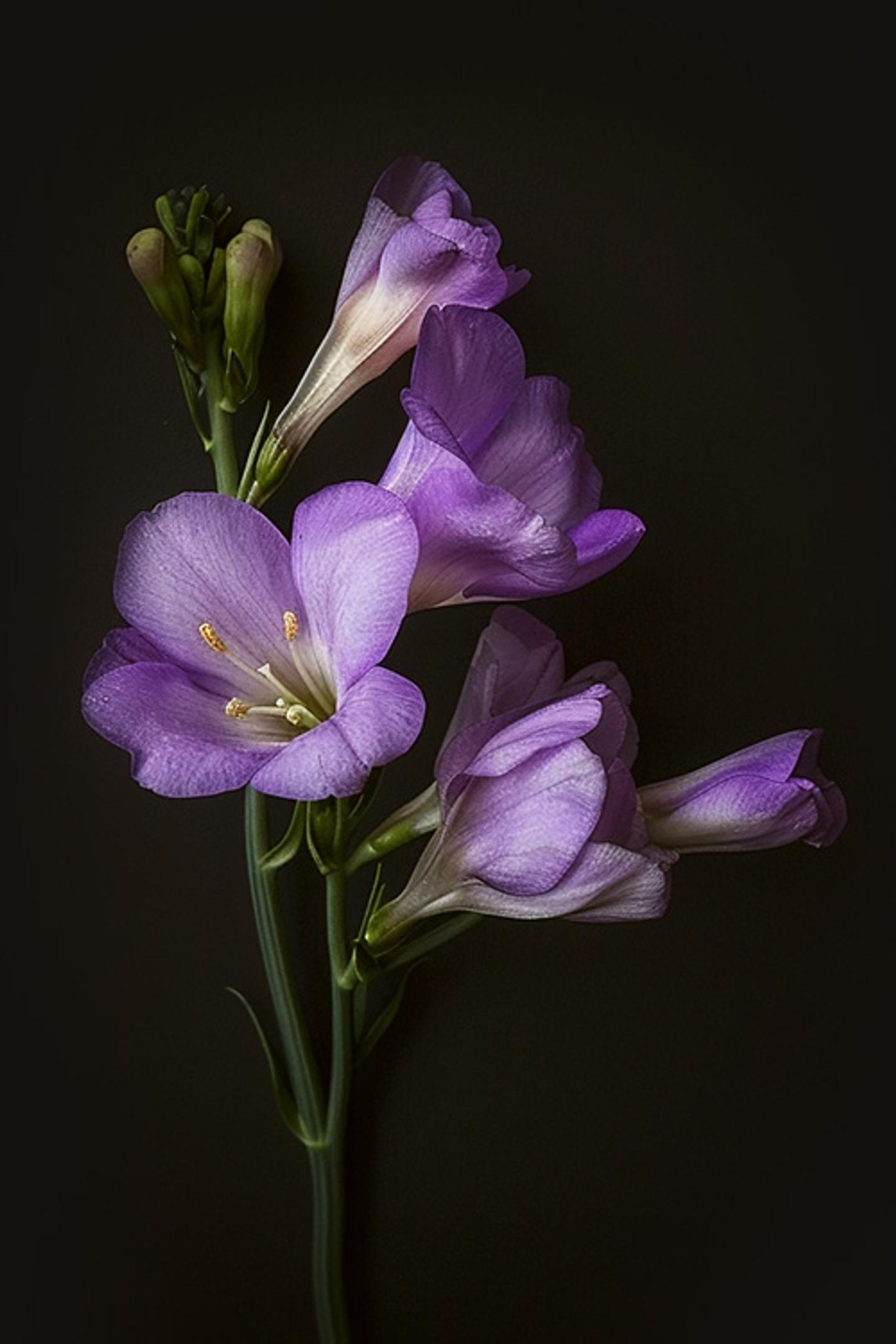Flower Meanings
Gerbera Daisy


The Meaning of Gerbera Daisies
Gerbera daisies have several meanings, all sharing a common denominator, happiness.
Beginning with the gerbera’s namesake, Gerbera jamesonii comes from a German botanist and doctor named Traugott Gerber. Otherwise known as the Transvaal Daisy, Scotsman Robert Jameson found these vibrant beauties growing amongst the dug up gold mines he was in charge of in Transvaal, South Africa. Therefore, both men are credited with discovering these flowers.
The Egyptian meaning of gerbera is a closeness to nature and devotion to the sun.
The Celts believed the gerbera would comfort one’s sorrows and everyday stresses.
In general, gerberas represent :
- simple beauty
- a very happy life
Throughout history, the gerbera daisy has remained a symbol of innocence, representing the innocent hearts of children and happiness and gratefulness for the life you’ve been given.
Gerberas are often said to represent an energized happiness instead of a more laidback, chill type of happiness. They are meant to evoke feelings of bubbliness and excitement you just can’t contain. [1]
Think of them as an upbeat, vibrant celebration of life!
Gerbera Daisy Color Meanings
There are many flowers that have just one meaning, but gerber daisies have many meanings depending on their color… and they have plenty of color varieties. Here are just a few different colors and what their gerbera color meaning is:
- Yellow gerbera daisies tend to symbolize cheerfulness and celebration.
- Red gerberas represent an unconscious love or to be fully immersed in love.
- Pink gerberas are a symbol of admiration, adoration, or high esteem for someone.
- White gerberas are a symbol of purity or a childlike innocence. [1]
What do Gerbera Daisies Smell Like?
Gerbera’s are scentless!

"Daisies, simple and sweet. Daisies are the way to win my heart."
Patrick Rothfuss
The History of the Gerbera Daisy
So we know the gerbera daisy was first discovered in 1884 near Barberton, South Africa, by a Scotsman by the name of Robert Jameson & German naturalist Traugott Gerber.
But what else!? We want to know it all!
We assume Jameson sent the plant to the Botanical Gardens in Cambridge, England. From there, the newly discovered gerberas made their way through England, eventually making their way to the Royal Botanical Gardens.
Beginning in about 1890 in England, Richard Irwin Lynch carried out breeding programs resulting in many improvements. With the help of these improvements, gerberas began their journey on the road to popularity, fame, and success.
Soon they were well known and well-loved throughout the Netherlands, where most modern breeding has occurred.
In the 1920s, gerberas made their way to North America. Extensive breeding took place at the University of California at Davis during the 1970s that eventually led to many plants suitable for garden use.
Breeding in Florida and Europe was more focused on developing long-stemmed cultivars for greenhouse cut-flower production, which is most commonly produced today in Japan and Europe, with most cut gerberas from Columbia surrounding countries in South America and the Netherlands. [2]
DID YOU KNOW - Gerbera Daisy Fun Fact
Out of thousands of flowers in the world, gerbera daisies are are in the top 5! [1]

How to Grow Gerbera Daisies
While treated as annuals in cold climates, gerbera daisies are classified as herbaceous perennials and members of the aster family.
They tend to reach a little over 1 foot high, although some may grow larger than that, and their stunning vibrant colors bloom all summer long.
Gerberas are typically grown as perennials in planting zones 9-11 and treated as annuals in the remaining zones.
Gerbera daisies thrive in planting areas that receive full sun to partial shade, ao be sure to keep this in mind when choosing your planting spot!
- Full sun preferable in the North and partial shade in the South.
Grow your gerberas in well-draining soil enriched with compost. Sandy soil is excellent for these blooms as well, as with gerberas, the more drainage, the better.
Give them an average amount of water except when transplanting (be sure transplants get plenty of water until they become established in their new location. Keep the soil evenly moist (not soggy) at the root level.
Fertilize your gerberas regularly will an all-purpose fertilizer for top-notch blooms. [3]
DID YOU KNOW - Gerbera Daisy Fun Fact
Gerberas will always turn towards the sun! [1]

How to Care for Gerbera Daisies
Your gerberas are thriving, and you want to bring a little bit of that beautiful vibrancy indoors.
Easy!
Here’s how you do it:
- Combine a packet of flower food with 1 quart of hot water in a clean container – mix and add the mixture to a clean vase.
- Hold your gerberas under water and cut the base of the stem at an angle using sharp shears.
- Put your stems into water immediately after cutting.
- Keep the water in the vase quite shallow (about 1 inch) to keep your fresh gerberas from becoming soggy and weak.
- Let the blooms set in a cool room overnight to condition the flowers and bring them into a space with bright indirect light the next day.
Avoid areas with high heat or freezing temps such as near drafty windows or vents, and replace the water with clean, fresh water every 2 days or if the water begins to discolor or become foggy. [4]
When to Send Gerbera Daisies as a Gift
Gerbera Daisies are perfect for any occasion as they symbolize happiness and comfort in times of stress and sorrow. They even make the perfect self-gift to brighten your own day!

References:
- 1 - flowermeaning.com
- 2 - auburn.edu
- 3 - The Spruce
- 4 - Home Guides
Flower Meanings — keep discovering

Flowering Dogwood
We all get that little tingle of excitement as we start to see the budding of the flowering dogwoods. They symbolize the end of a long, cold winter and the beginning of a fresh spring. But that’s not all they symbolize…

Forget Me Nots
Next time you need a bouquet, don’t forget about forget-me-nots! A delicate but beautiful flower, with a storied past, and rich with symbolism.

Freesia
The sweet smell of spring! These blooms may be dainty, but don’t let that fool you! We’re talking about freesia!

Gardenia
Gardenias, not to be confused with giardiniera (the pickled vegetable medley), are beloved for their unique fragrance and distinct, creamy-white flowers and leathery green leaves. Gardenias are heat-loving evergreen shrubs or trees that make up for their not-so-easy maintenance with a spellbinding scent.

Flowering Dogwood
We all get that little tingle of excitement as we start to see the budding of the flowering dogwoods. They symbolize the end of a long, cold winter and the beginning of a fresh spring. But that’s not all they symbolize…

Forget Me Nots
Next time you need a bouquet, don’t forget about forget-me-nots! A delicate but beautiful flower, with a storied past, and rich with symbolism.

Freesia
The sweet smell of spring! These blooms may be dainty, but don’t let that fool you! We’re talking about freesia!

Gardenia
Gardenias, not to be confused with giardiniera (the pickled vegetable medley), are beloved for their unique fragrance and distinct, creamy-white flowers and leathery green leaves. Gardenias are heat-loving evergreen shrubs or trees that make up for their not-so-easy maintenance with a spellbinding scent.
Ready to send beautiful flowers?
Our guided experience helps you send a one-of-a-kind arrangement perfect for every occasion.
Send Flowers